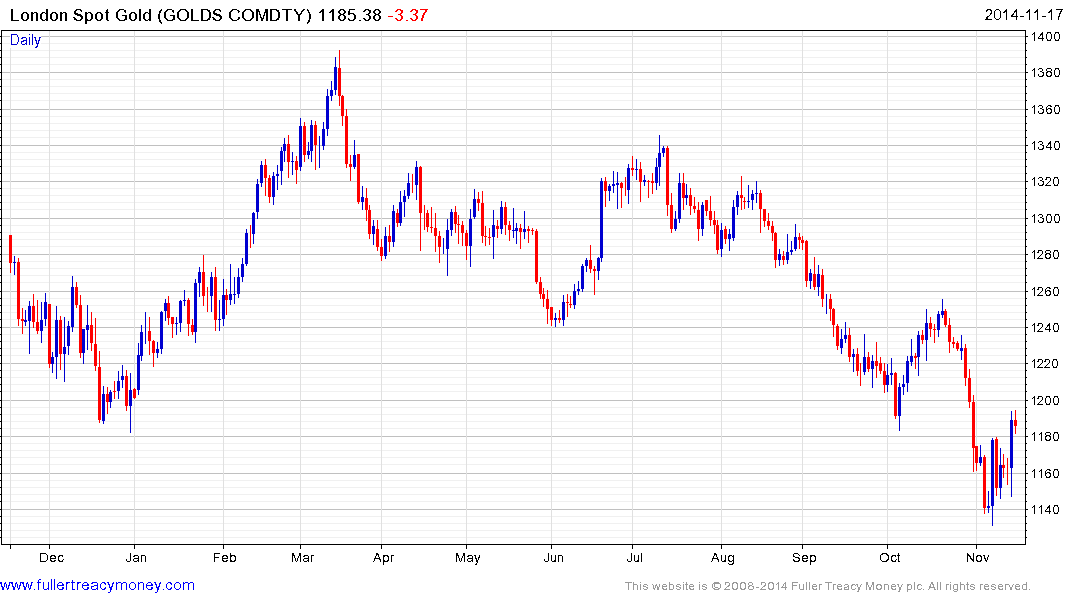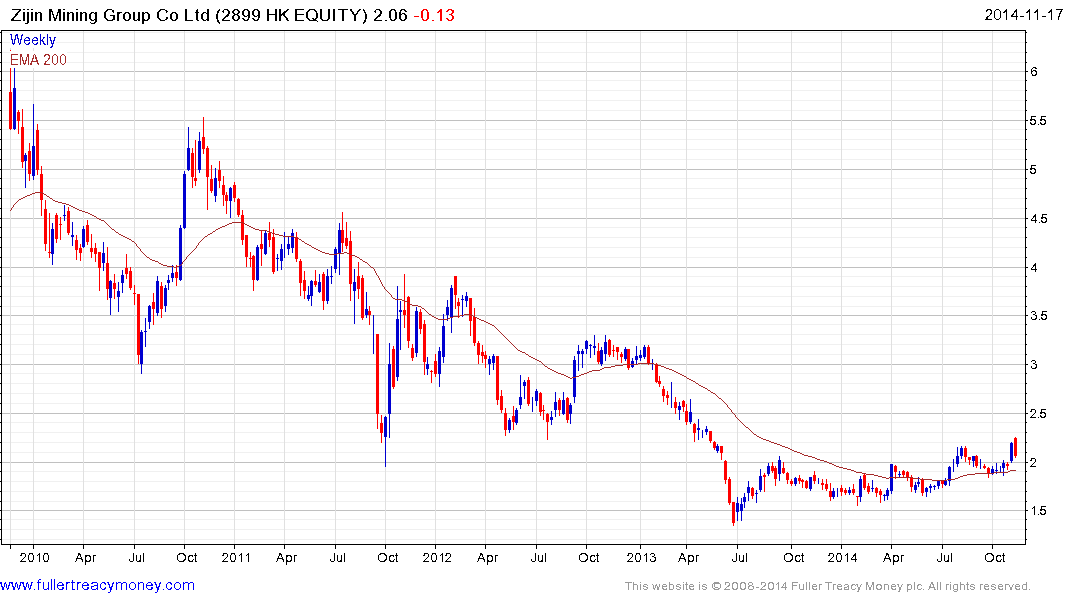Peg worth its weight in gold: a detailed analysis of the Swiss gold referendum
Thanks to a subscriber for this report from Deutsche Bank which may be of interest to subscribers. Here is a section:
On 30 November, the Swiss will vote in a referendum to amend the constitutional mandate of the Swiss National Bank (SNB) with respect to its gold reserves. The proposal is that
the SNB never sells any gold reserves once acquired,
the SNB stores all its gold reserves on Swiss territory,
the SNB holds at least 20% of its official reserve assets in the form of gold.Gold reserves would have to be repatriated within two years of the referendum, while the SNB would be given five years to align its gold reserves to the 20% minimum requirement.
The background to the proposal is concern among conservative observers that the SNB’s reduction in its gold reserves in recent years has constituted a plundering of the nation’s intergenerational wealth and economic status. The rationale behind a gold reserve ratio is the perceived association of gold backed currencies with price stability: the exogenously constrained supply of gold is hoped will restrain the central bank in its creation of fiat money.
Opponents of the proposal have warned against the constraints that would be placed on the SNB¡¦s monetary policy instruments. While the camps appear to have reached stalemate over the fundamental objectives of monetary policy, opponents of the “gold initiative” have argued that gold reserves in the central bank’s balance sheet yield no distributable interest and are excessively vulnerable to price shocks. Two-thirds of SNB profits have traditionally been distributed to the cantons and are an important source of regular income.
Here is a link to the full report.
There are a number of moving parts to this argument not least because of Switzerland’s long history as a strong currency regime. The Austrian school of economics, which has a suspicious attitude to the inflationary bias of modern central banking is particularly strong among a certain segment of the Swiss electorate so there is a real possibility that at least some of the above measures will be adopted. Repatriating Swiss gold has obvious merit from a security perspective for example. However the other questions impose limits on the central bank’s ability to influence the currency market which would be a headwind for exporters. As a result they will be more difficult to pass.

Nevertheless, the prospect of Switzerland needing to purchase a substantial quantity of bullion represents a risk for anyone with short positions. Last week’s follow through on the prior week’s upside key day reversal suggests that demand is beginning to return to dominance in the region of the lower side of the 18-month range. A sustained move back above $1200 would signal a failed downside break.

Among miners, Zijin Mining, which has exhibited relative strength with a progression of higher reaction lows since June 2013, pulled back sharply today following news that a major shareholder reduced its position by over 1% of free float. The share currently yields 4.82% but will need to find support in the region of the 200-day MA in order to demonstrate continued demand dominance.


